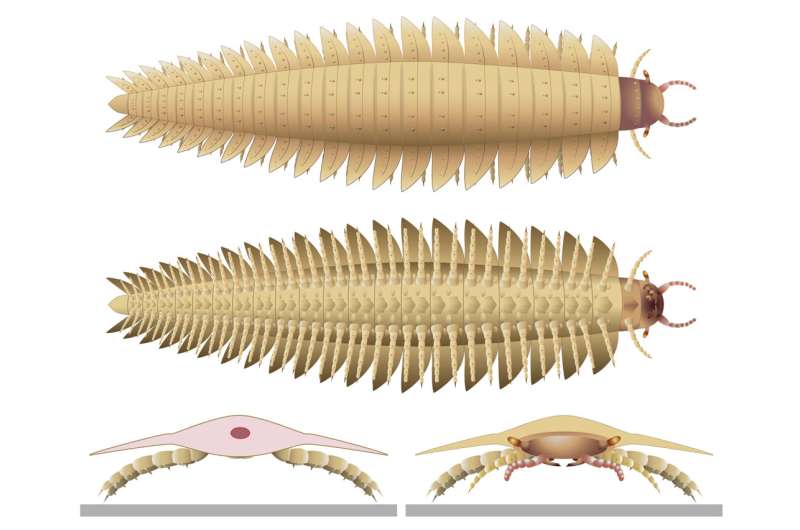Researchers have finally solved the mystery of the ancient Arthropleura, a massive arthropod that once roamed the Earth. By studying well-preserved juvenile fossils, scientists have reconstructed the 9-foot-long creature’s distinctive head, shedding light on its unique features and place in the evolutionary tree. This discovery offers a glimpse into the remarkable diversity of life during the Carboniferous period, over 300 million years ago. Arthropleura was a remarkable precursor to modern millipedes and centipedes, blending characteristics of both.

Unraveling the Mystery of the Arthropleura’s Head
For decades, scientists have been captivated by the enigmatic Arthropleura, the largest bug to have ever existed. These massive arthropods, measuring up to 9 feet in length and weighing over 100 pounds, were a true marvel of the Carboniferous period. However, their elusive heads have long eluded researchers, as the fossils found were often just headless shells, left behind as the creatures molted and grew ever larger.
Now, a team of paleobiologists has finally cracked the code, using advanced CT scanning techniques to study well-preserved juvenile Arthropleura fossils found in a French coal field. The results, published in the journal Science Advances, reveal a surprising mix of features, with the body of a millipede and the head of a centipede. The Arthropleura’s head was a round bulb with two short, bell-shaped antennae, two protruding eyes like a crab, and a relatively small mouth adapted for grinding leaves and bark.
Revealing the Evolutionary Significance of Arthropleura
The discovery of the Arthropleura’s distinctive head has not only solved a longstanding mystery but also shed light on the creature’s evolutionary significance. As part of the arthropod group, which includes crabs, spiders, and insects, Arthropleura shared features with both modern-day centipedes and millipedes, suggesting a close evolutionary relationship.
“We discovered that it had the body of a millipede, but head of a centipede,” explained study co-author Mickael Lheritier, a paleobiologist at the University Claude Bernard Lyon in Villeurbanne, France. This unique blend of characteristics highlights the remarkable diversity of life during the Carboniferous period, a time when the Earth’s landmasses were still coalescing and the climate was significantly warmer and wetter than today.
The Arthropleura: A Prehistoric Giant with a Fascinating History
The Arthropleura was not only an impressive physical specimen but also a testament to the incredible adaptability of life on Earth. These massive arthropods thrived in the lush, tropical environments of the Carboniferous period, feeding on the abundant vegetation and playing a vital role in the ecosystem.
While the largest Arthropleura may have been the biggest bugs to ever live, there is still some debate, with some researchers suggesting they may be second in size to an extinct giant sea scorpion. Nonetheless, the Arthropleura’s striking appearance and captivating history have captured the imaginations of scientists and the public alike. As we continue to unravel the mysteries of the past, the story of this ancient giant serves as a reminder of the resilience and diversity of life on our planet, even in the face of dramatic environmental changes.
